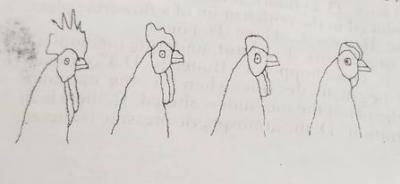Year :
2021
Title :
Biology
Exam :
WASSCE/WAEC MAY/JUNE
Paper 1 | Objectives
31 - 40 of 50 Questions
| # | Question | Ans |
|---|---|---|
| 31. |
Rabbits cannot survive in an aquatic habitat because they have A. no scales B. no gills C. fore limbs D. lateral line |
B |
| 32. |
The illustration below is a food chain.Grass→grasshopper→domestic fowl→hawkWhat would happen if the population of domestic fowl decreases? A. grasshoppers would decrease B. hawks would increase C. grasshoppers would increase D. grasses available to grasshoppers |
C |
| 33. |
Which of the following features is a characteristic of aquatic plants possession of ? A. multiple epidermis B. heavily lignified tissue C. finely divided leaves D. succulent stem |
D |
| 34. |
An association between living organisms in which one organism lives on and feeds at the expense of the other organism is known as? A. mutualism B. commensalism C. parasitism D. predation |
C |
| 35. |
When a large number of organisms share limited resources, the result is? A. mutualism B. extinction C. commensalism D. competition |
D |
| 36. |
Which of the following behaviours is correctly matched with the corresponding diseases? A. Lung cancer, AIDS B. Having multiple sexual partners / liver cirrhosis, syphilis, AIDS. C. Living near dirty gutter / Lung cancer, syphilis, river blindness. D. food poisoning. |
D |
| 37. |
Endangered species are organisms that are? A. likely to migrate to other favourable lands B. likely to disappear from the surface of the earth C. reproducing profusely in an area D. dangerous to humans and attacking other animals |
B |
| 38. |
Which of the following practices is a wildlife conservation method? A. use of cover crops B. crop rotation C. mulching D. discouraging poaching |
D |
| 39. |
Which of the following resources cannot be conserved? A. forest B. water C. soil D. garbage |
D |
| 40. |
 The diagrams above are illustrations of types of comb found in domestic fowl. Study them and answer this question.The types of comb show ? A. variation B. inheritance C. cell theory D. courtship behaviour |
A |
| 31. |
Rabbits cannot survive in an aquatic habitat because they have A. no scales B. no gills C. fore limbs D. lateral line |
B |
| 32. |
The illustration below is a food chain.Grass→grasshopper→domestic fowl→hawkWhat would happen if the population of domestic fowl decreases? A. grasshoppers would decrease B. hawks would increase C. grasshoppers would increase D. grasses available to grasshoppers |
C |
| 33. |
Which of the following features is a characteristic of aquatic plants possession of ? A. multiple epidermis B. heavily lignified tissue C. finely divided leaves D. succulent stem |
D |
| 34. |
An association between living organisms in which one organism lives on and feeds at the expense of the other organism is known as? A. mutualism B. commensalism C. parasitism D. predation |
C |
| 35. |
When a large number of organisms share limited resources, the result is? A. mutualism B. extinction C. commensalism D. competition |
D |
| 36. |
Which of the following behaviours is correctly matched with the corresponding diseases? A. Lung cancer, AIDS B. Having multiple sexual partners / liver cirrhosis, syphilis, AIDS. C. Living near dirty gutter / Lung cancer, syphilis, river blindness. D. food poisoning. |
D |
| 37. |
Endangered species are organisms that are? A. likely to migrate to other favourable lands B. likely to disappear from the surface of the earth C. reproducing profusely in an area D. dangerous to humans and attacking other animals |
B |
| 38. |
Which of the following practices is a wildlife conservation method? A. use of cover crops B. crop rotation C. mulching D. discouraging poaching |
D |
| 39. |
Which of the following resources cannot be conserved? A. forest B. water C. soil D. garbage |
D |
| 40. |
 The diagrams above are illustrations of types of comb found in domestic fowl. Study them and answer this question.The types of comb show ? A. variation B. inheritance C. cell theory D. courtship behaviour |
A |